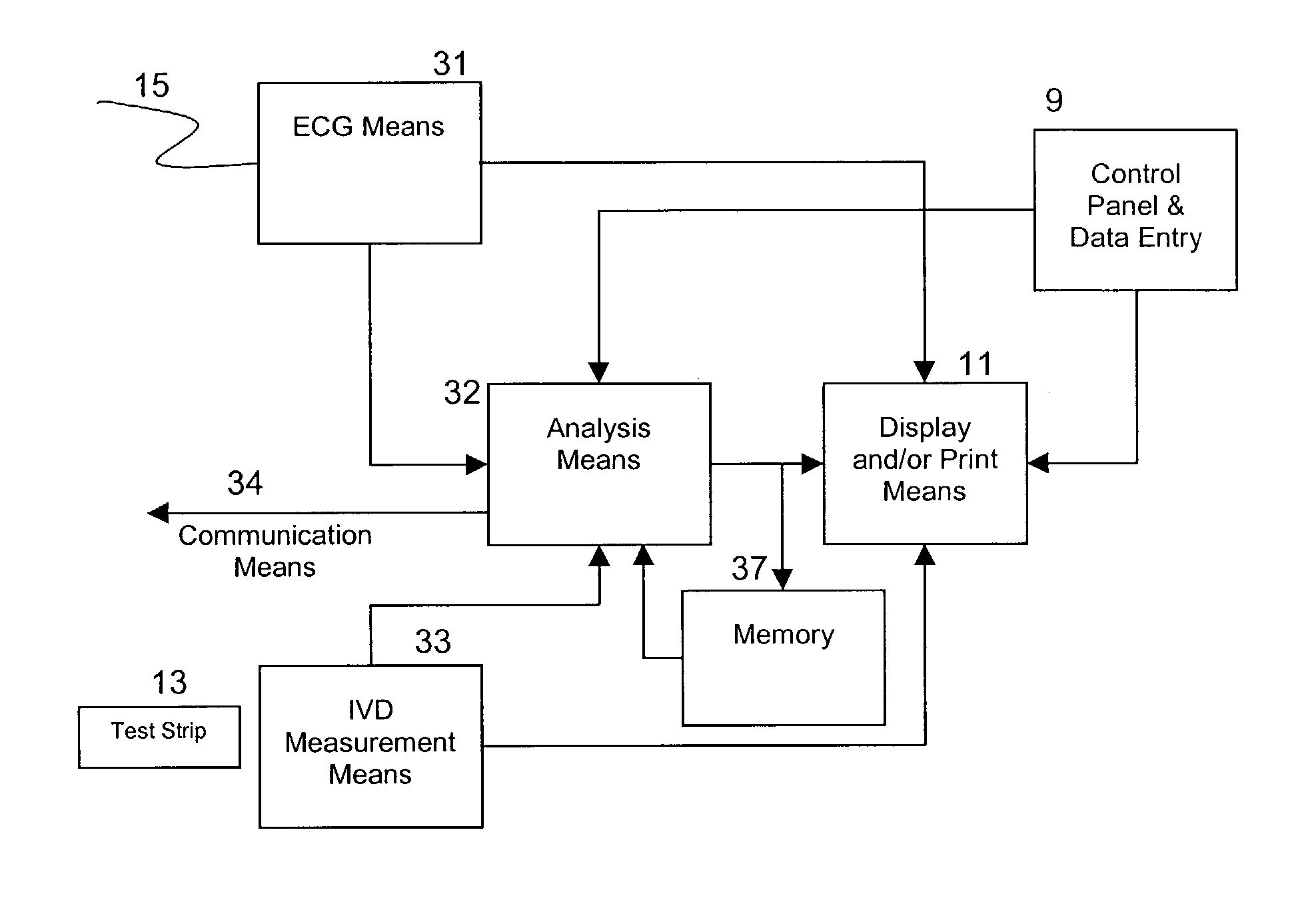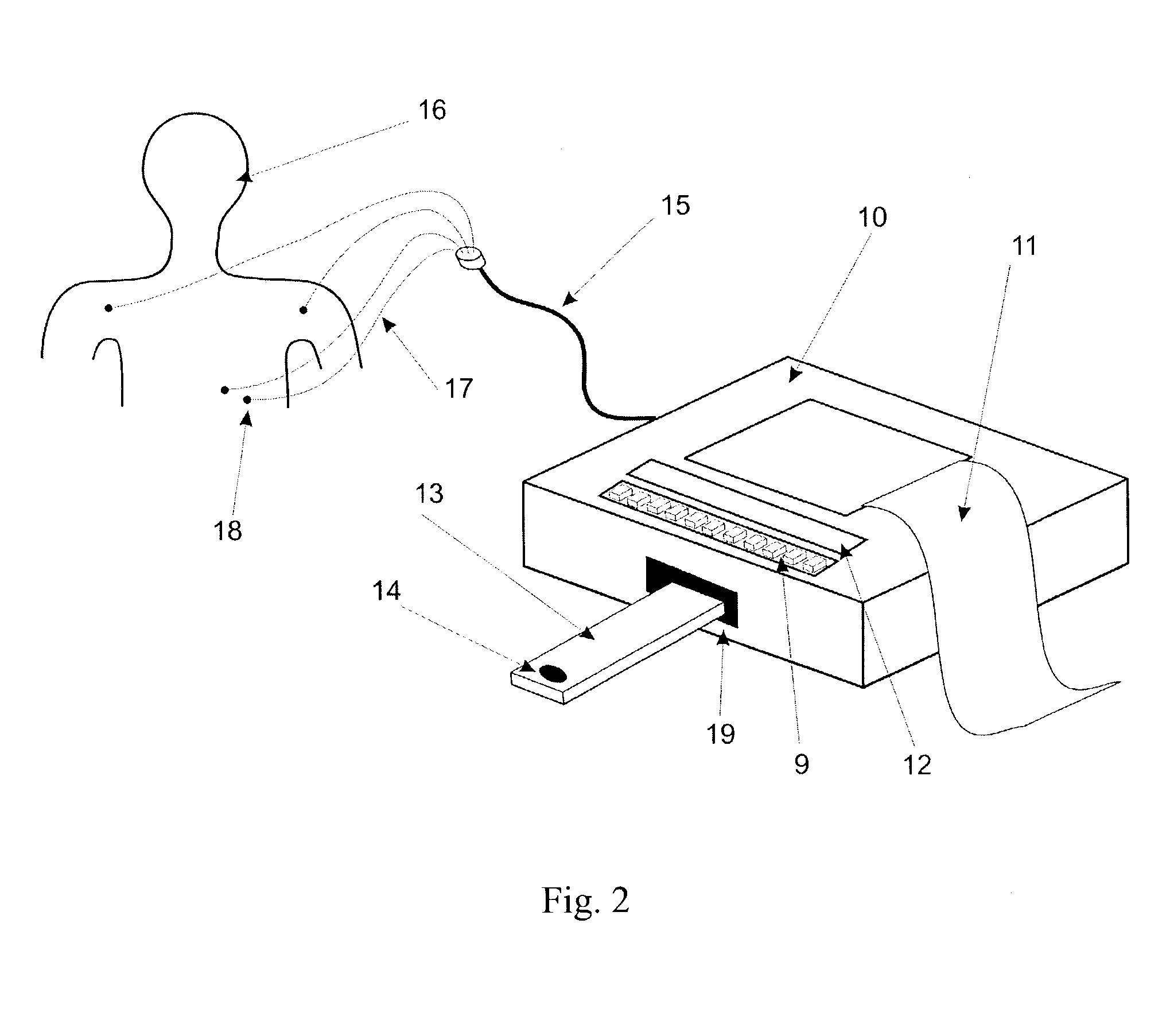Apparatus and method for risk stratification of patients with chest pain of suspected cardiac origin
- Summary
- Abstract
- Description
- Claims
- Application Information
AI Technical Summary
Benefits of technology
Problems solved by technology
Method used
Image
Examples
example 1
The ACB Test used for Diagnosis of Acute Coronary Syndromes
[0079] A study was performed to investigate the performance of IMA for early risk stratification of patients presenting with chest pain (or equivalent) of suspected cardiac origin. The performance of IMA was compared with troponin T and the presentation 12 lead ECG. The end point was discharge diagnosis of ACS (STEMI, NSTEMI or UA) or Non Ischemic Chest Pain (NICP), as a measure of short term risk at presentation.
[0080] Patients who arrived at the Emergency Department (ED) with clinical signs and symptoms of possible ACS within 3 hours from symptom onset were enrolled. All patients had a 12 lead ECG and a blood sample collected within 1-2 hours of arrival to the ED. IMA and cTnT (Roche Diagnostics) testing was performed on each presentation sample.
[0081] Data Analysis
[0082] ECGs with no ST segment shift or T wave changes (apart from lead III or V1) were considered “negative”. “Positive” ECGs were those with ST segment de...
example 2
IMA for Risk Stratification of Chest Pain Patients
[0114] This study was designed to investigate the performance of IMA, ECG, and troponin T at acute presentation for early risk stratification of patients with chest pain suggestive of cardiac origin. The study was performed in a low to medium risk patient population referred for rest myocardial perfusion imaging (MPI) on presentation.
[0115] The institutional discharge diagnosis of ACS (i.e.: a measure of short term risk) was used for data analysis presented in this section. Serum specimens were drawn prospectively and assayed at one of two core laboratories with the ACB Test and cardiac troponin T assays.
[0116] One blood specimen was drawn prior to injection of the perfusion agent (the presentation draw or an additional baseline draw was taken if the MPI study was scheduled >1 hr from presentation). Another blood draw was taken one hour post injection of the myocardial perfusion agent. All of these blood draws were consistent with...
PUM
 Login to View More
Login to View More Abstract
Description
Claims
Application Information
 Login to View More
Login to View More - R&D
- Intellectual Property
- Life Sciences
- Materials
- Tech Scout
- Unparalleled Data Quality
- Higher Quality Content
- 60% Fewer Hallucinations
Browse by: Latest US Patents, China's latest patents, Technical Efficacy Thesaurus, Application Domain, Technology Topic, Popular Technical Reports.
© 2025 PatSnap. All rights reserved.Legal|Privacy policy|Modern Slavery Act Transparency Statement|Sitemap|About US| Contact US: help@patsnap.com



